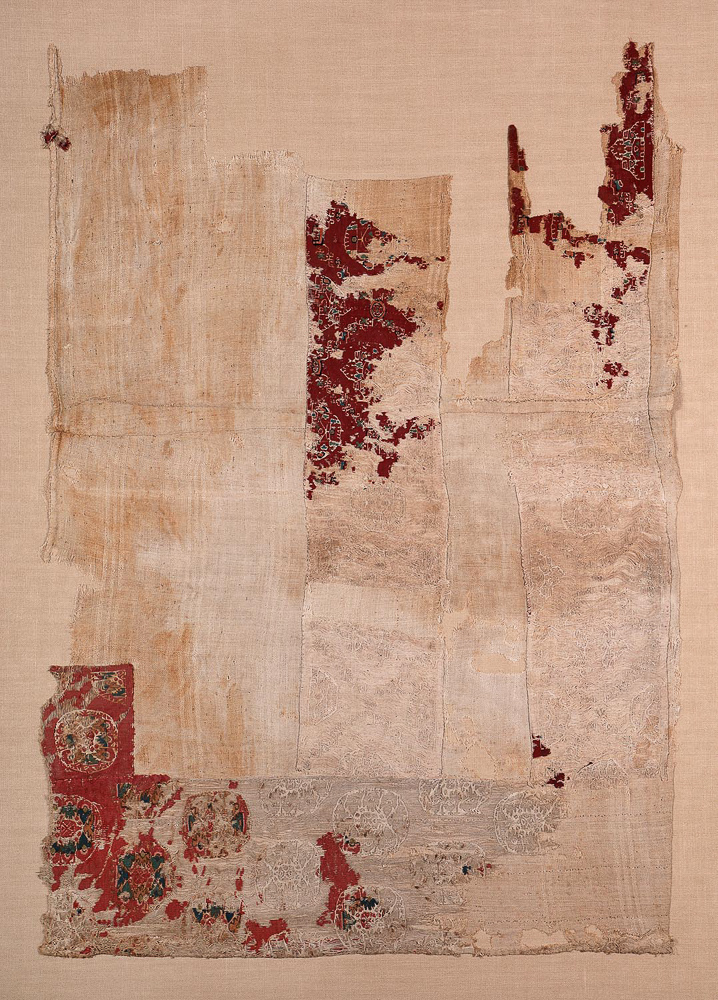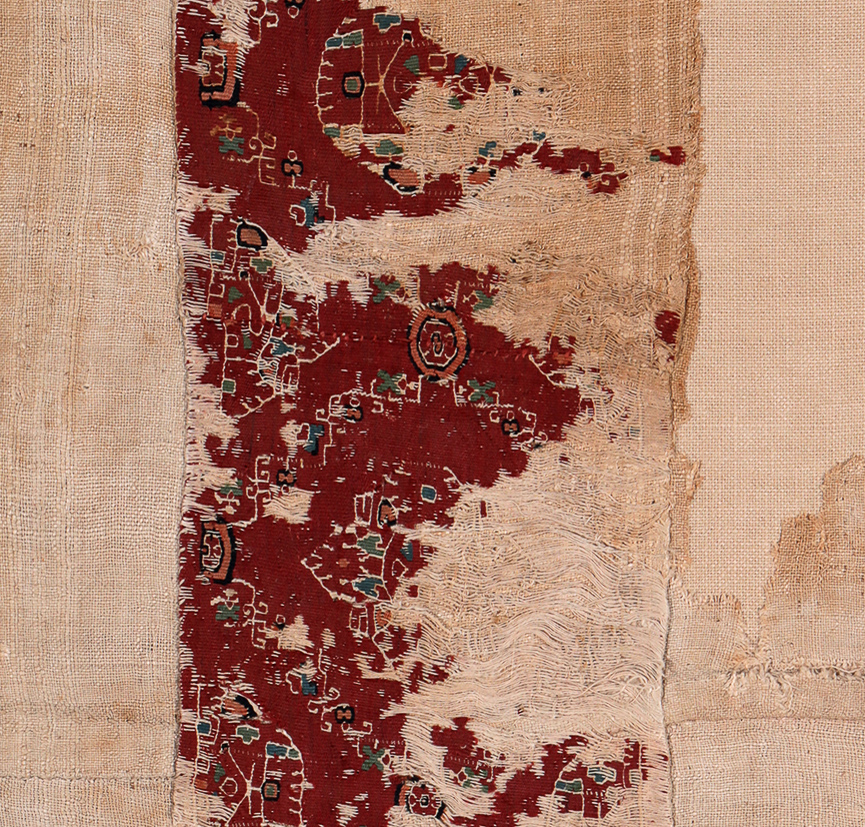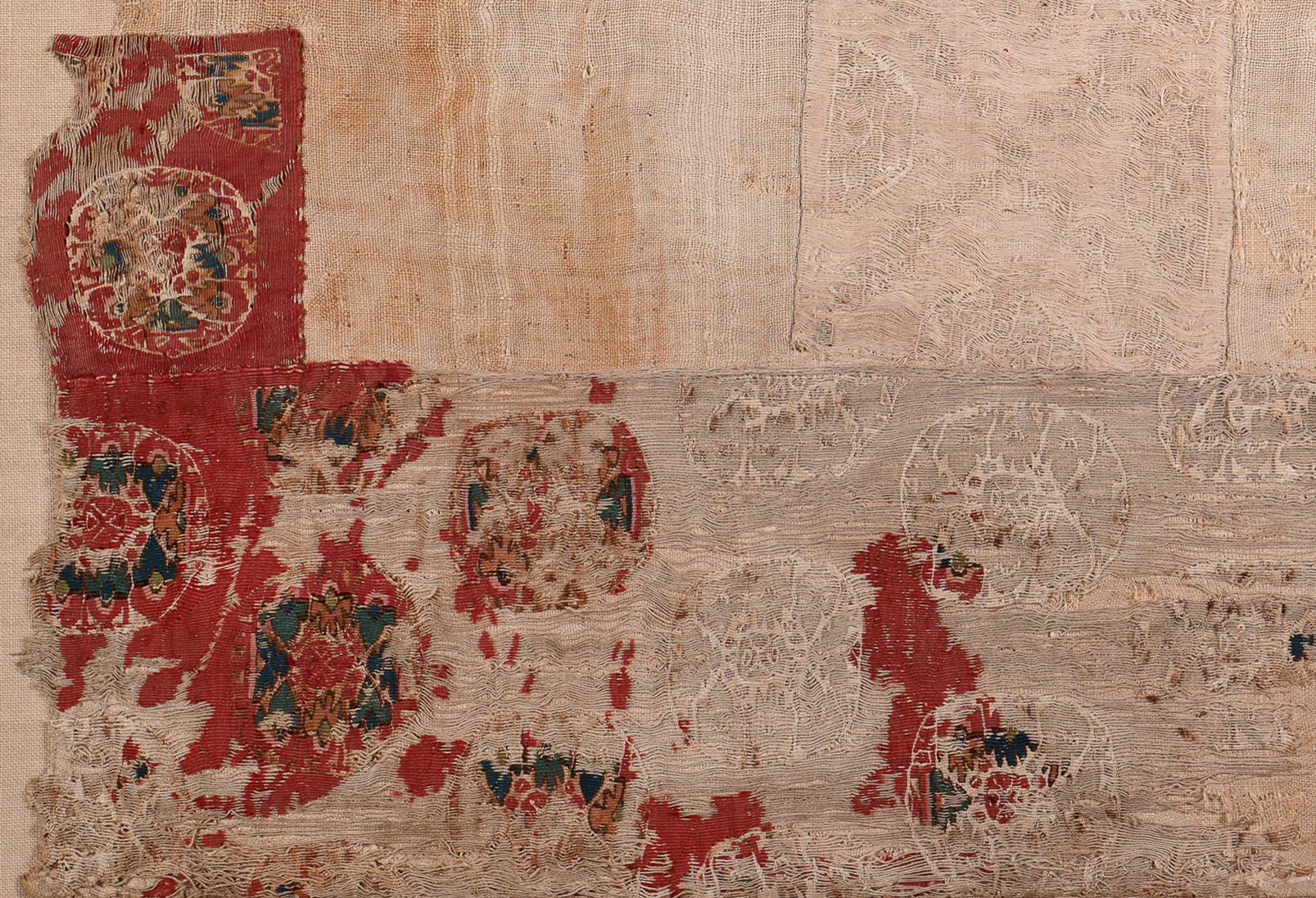The decoration is formed by pieces from two separate bands. The vertical bands show the remains of rosettes in a network of lozenges formed by small multi-coloured motifs on a scarlet ground. The crimson band at the bottom, probably cut out from the same textile for re-use, has a similar design. Despite the presence of a waist tuck to support a belt, the width of the bands could rather indicate a furnishing textile.
Origin:
Egypt
Date:
7th - 10th century
Material:
Linen and wool
Dimensions:
H. 100 cm, L. 71 cm; original dimensions H. 120 cm, L. (without sleeves): 94 cm; distance hem to tuck: 59cm
Comparisons:
V&A, London, inv. 363-1887.
Provenance:
Collection Coptic textiles Fill-Trevisiol: donation
Location:
Musée royal de Mariemont
Separately-woven linen and woollen tapestries sewn onto the linen cloth.
I. Ground weave
Warp:
natural-coloured linen: S: 11/cm
Weft:
natural-coloured linen S: 11/cm
Weave:
tabby
Other features:
selfbands every 7cm; selfbands: 3 x (3 x 2 yarns/pick)
II. Tapestry areas
1) Band on hem and on side seam
2) Clavi
3) Small band to finish the underarm opening (width: 1cm, tapestry on twined warp)
Warp:
1) natural-coloured linen, S2Z: 12/cm
2) natural-coloured linen S
Weft:
1) pink, orange, brown, green and nuances of blue wool S: 44/cm; natural-coloured linen S
2) red, blue, green, orange and black wool S: 54/cm; natural-coloured linen S
Weave:
1) weft-faced tabby
2) extended tabby 2/2
Ribs per cm:
2) 9
Special techniques:
1) slit tapestry, eccentric weft


